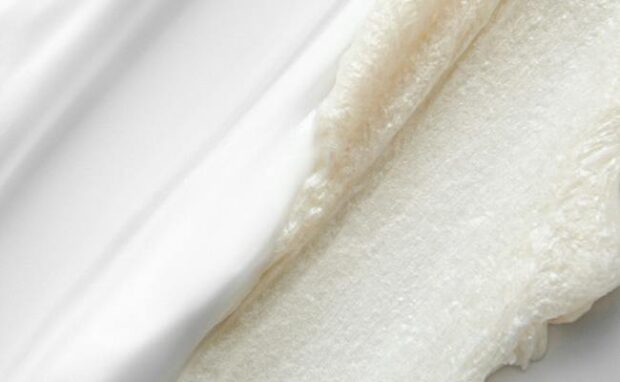Carbon monoxide foam boosts cancer treatments
Researchers created a carbon monoxide-infused foam that makes cancer treatments more effective. It restricts autophagy, a cell death process that cancer cells manipulate to promote their growth. Feeding the carbon monoxide solution to mouse and human lab cells enables autophagy treatments to stop tumor spread.
Carbon monoxide is a poisonous substance under normal circumstances, but scientists have turned it into a viable cancer treatment. Further research and development could turn it into an option at your local hospital and others worldwide. As a result, we could save more from cancer’s debilitating effects and help them lead normal lives.
This article will discuss how this CO foam improves existing cancer treatments. Later, I will share another breakthrough in beating this disease.
How does this carbon monoxide foam work?

The CO solution’s creators gained inspiration from an intriguing observation: cancer patients who smoked had better results from treatments that restrict autophagy. Medical News Today says it involves recycling dysfunctional cells into new ones.
Autophagy could promote cancer growth by destroying and then remaking them into new ones. That is why some procedures inhibit this phenomenon, but it typically has mixed results.
“When we looked at how the smokers did in those trials, we saw an increase in overall response in smokers that received the autophagy inhibitors, compared to non-smoker patients, and we also saw a pretty robust decrease in the target lesion size,” says Carver College of Medicine oncologist James Byrne.
Surprisingly, smokers have more consistent success when taking autophagy treatments. That is why researchers thought carbon monoxide might be a viable cancer solution.
Carbon monoxide is a colorless gas that comes from cigarette smoke and car fumes. It is a hazardous substance, so researchers used Gas-Entrapping Materials (GEMs) to create a safe-to-drink solution.
They succeeded in eliminating cancerous human and mouse lab cells. Then, they gave it to mice with pancreatic and prostate cancers while administering autophagy inhibitors.
You may also like: Skin cancer soap earns US teen award
ScienceAlert says it significantly reduced tumor growth and progression. “Smokers have higher carbon monoxide levels, and while we definitely don’t recommend smoking, this suggested that elevated carbon monoxide might improve the effectiveness of autophagy inhibitors,” says Byrne.
The researchers believe their CO foam might work on other cancers besides those targeting the pancreas and prostate. Soon, they may turn it into a practical cancer solution.
“The results from this study support the idea that safe, therapeutic levels of CO, which we can deliver using GEMs, can increase the anti-cancer activity of autophagy inhibitors, opening a promising new approach that might improve therapies for many different cancers,” stated Byrne.
Other recent cancer breakthroughs

Other scientists developed another potential cancer treatment that uses vibrating molecules. They discovered shining near-infrared light on aminocyanine molecules causes them to vibrate.
Their moving electrons form plasmons that drive movement across the whole of the molecule. Eventually, the movement will break and eliminate cancer cell membranes. Researchers tested them on cultured, lab-grown cancer cells, yielding a 99% hit rate in destroying cells.
They also tested the method on mice with melanoma tumors, and half became cancer-free. These researchers from Texas A&M University, Rice University, and the University of Texas say it significantly improves over another method called Feringa-type motors.
“It is a whole new generation of molecular machines that we call molecular jackhammers,” says chemist James Tour from Rice University.
“They are more than one million times faster in their mechanical motion than the former Feringa-type motors, and they can be activated with near-infrared light rather than visible light.”
It is an important development that lets scientists delve deeper into the body. Vibrating molecules could treat bone and organ cancers without needing surgery.
You may also like: Nanotubes could kill cancer and heart disease
“What needs to be highlighted is that we’ve discovered another explanation for how these molecules can work,” says chemist Ciceron Ayala-Orozco from Rice University.
“This is the first time a molecular plasmon is utilized in this way to excite the whole molecule and to actually produce mechanical action used to achieve a particular goal, in this case, tearing apart cancer cells’ membrane.”
The researchers admit their new method requires more research and development before it becomes practical. Consequently, they explore its purposes, such as using other substances besides aminocyanine.
Conclusion
Scientists created a carbon monoxide foam that increases the effectiveness of autophagy cancer treatments. However, they admit they need more research and development before releasing it as a safe healthcare procedure.
They need time to verify its efficacy. Fortunately, we have more procedures under development that may help us eliminate tumors, too.
Learn more about this carbon monoxide solution at the Wiley Online Library. Also, check out the latest digital tips and trends at Inquirer Tech.